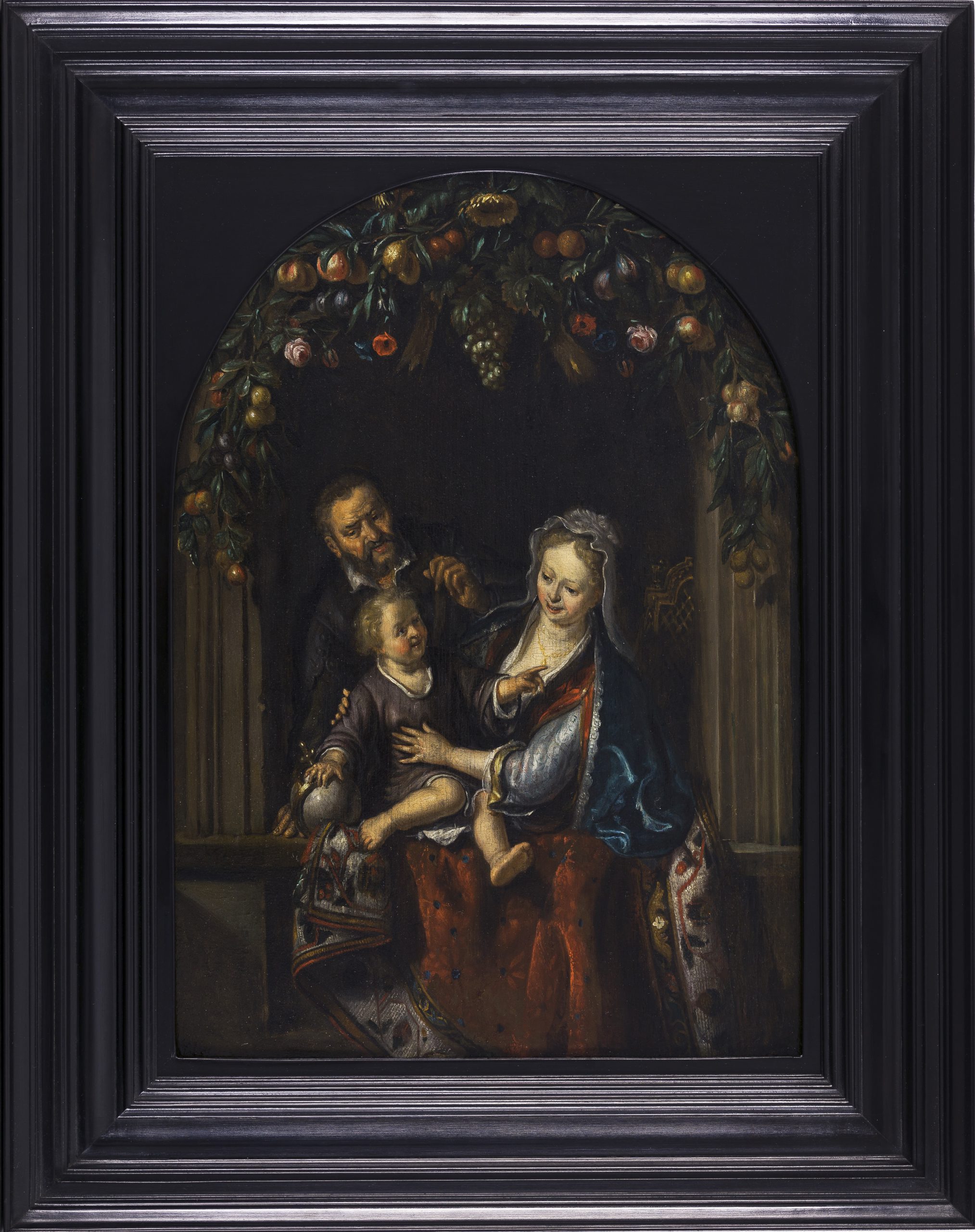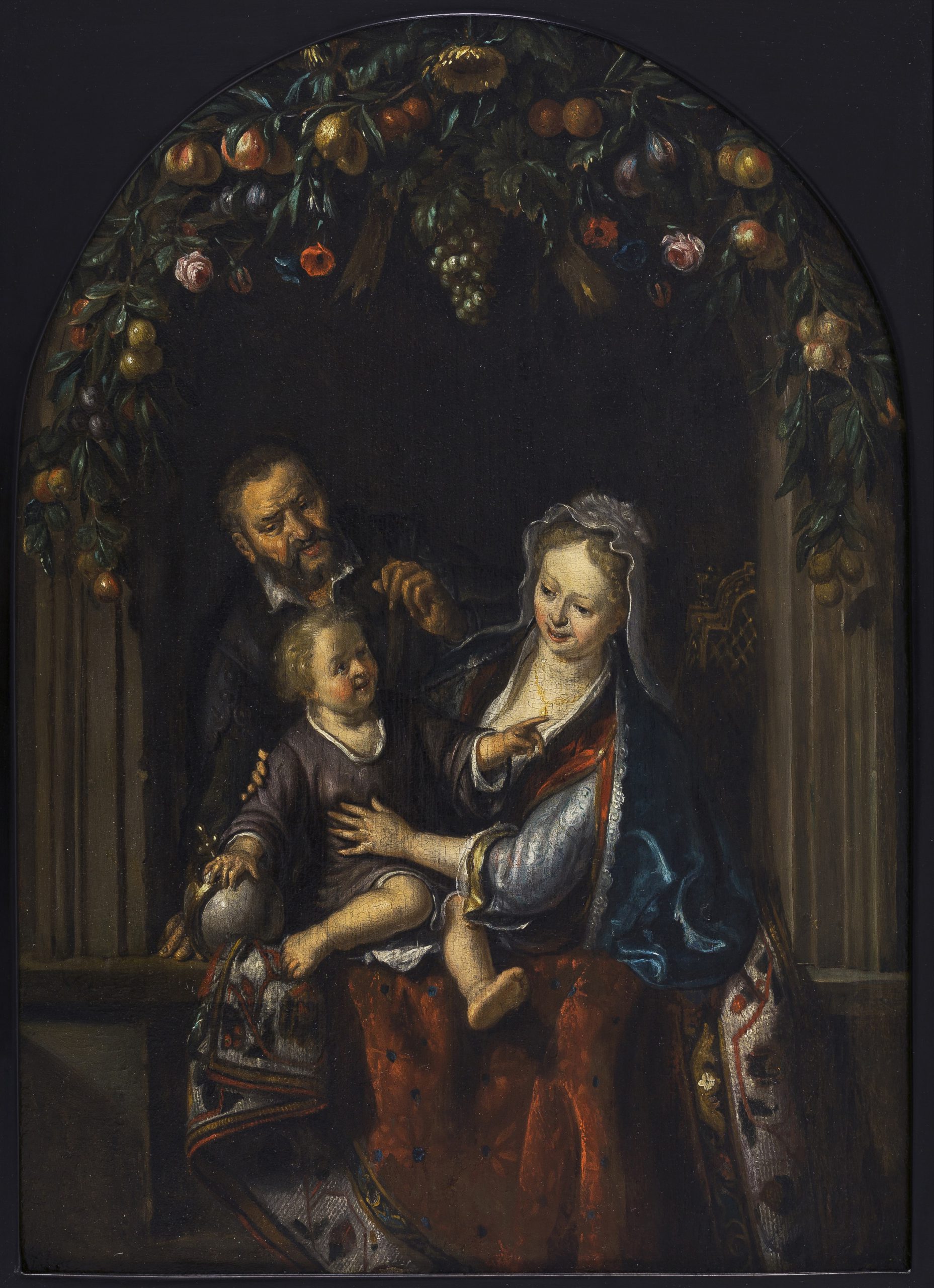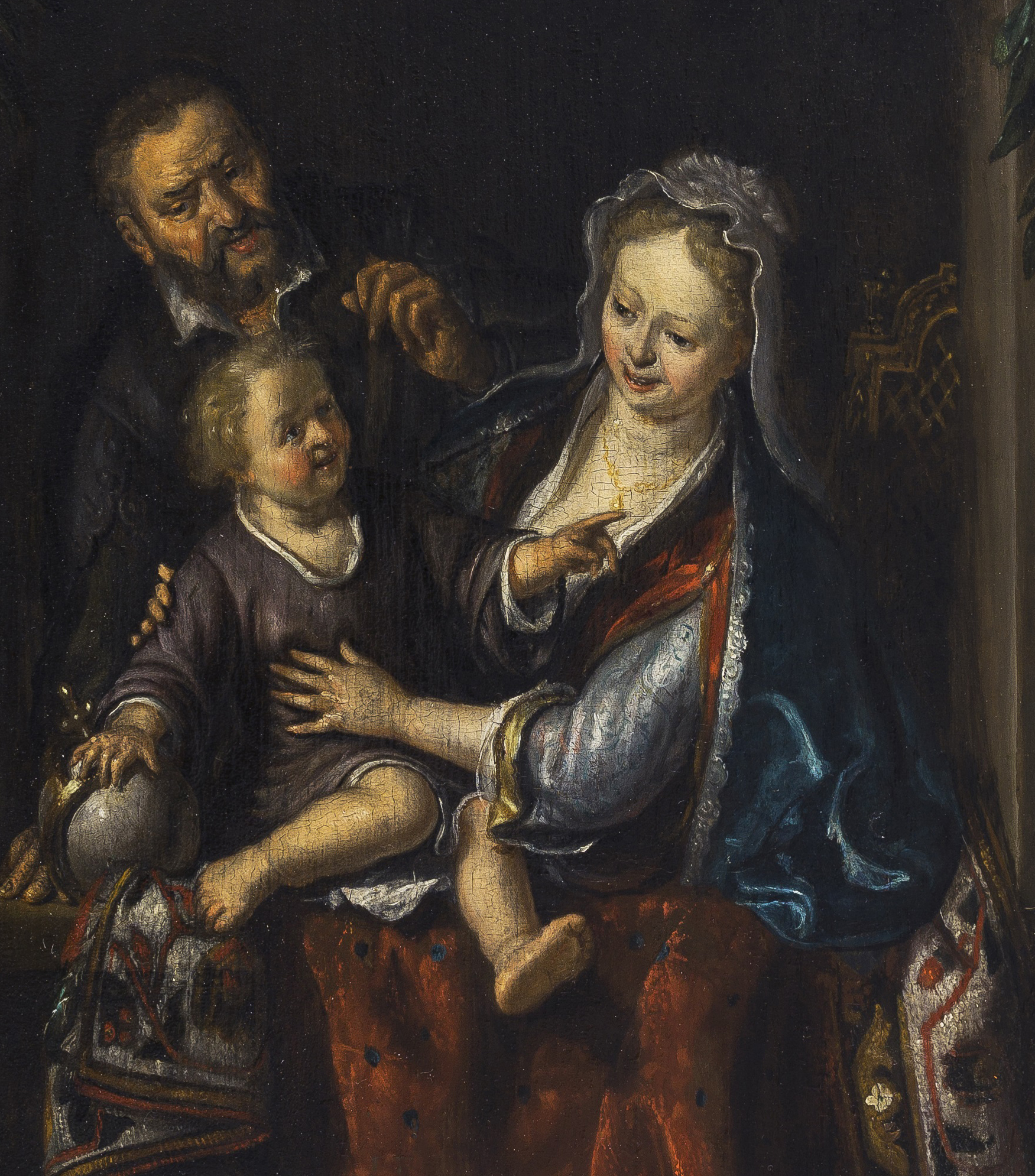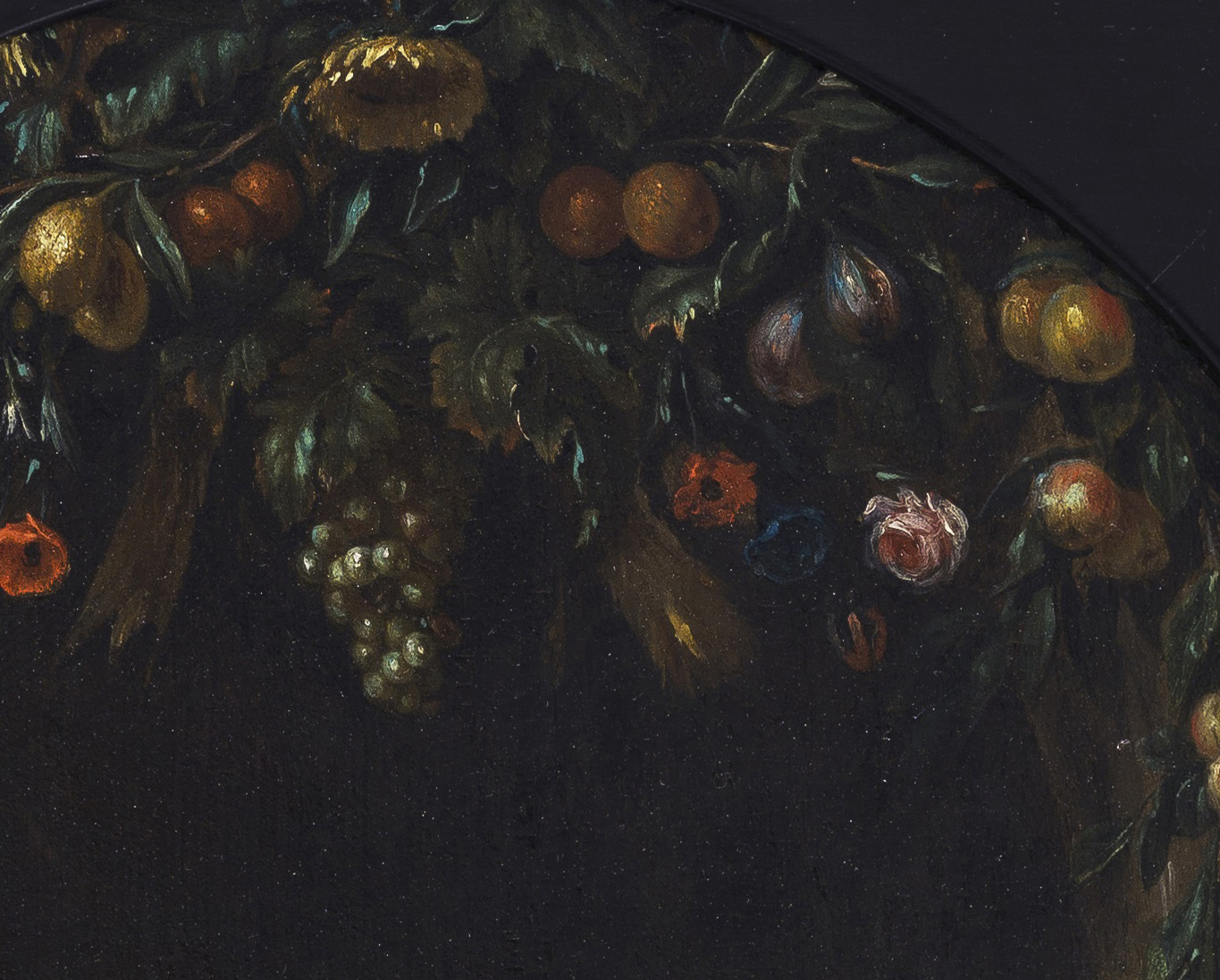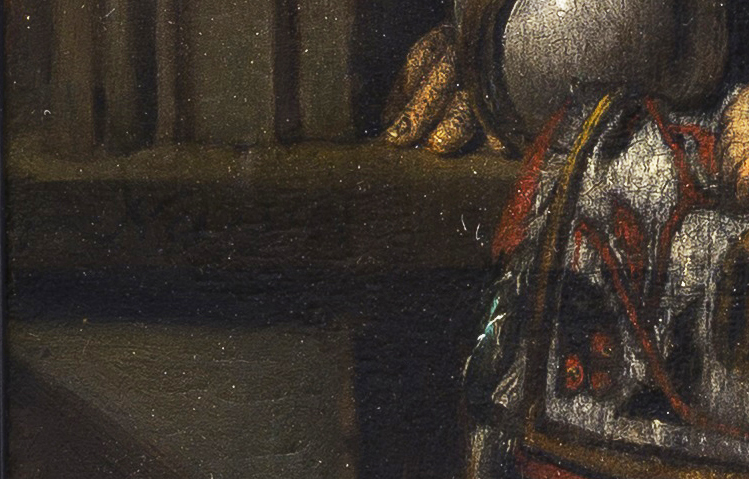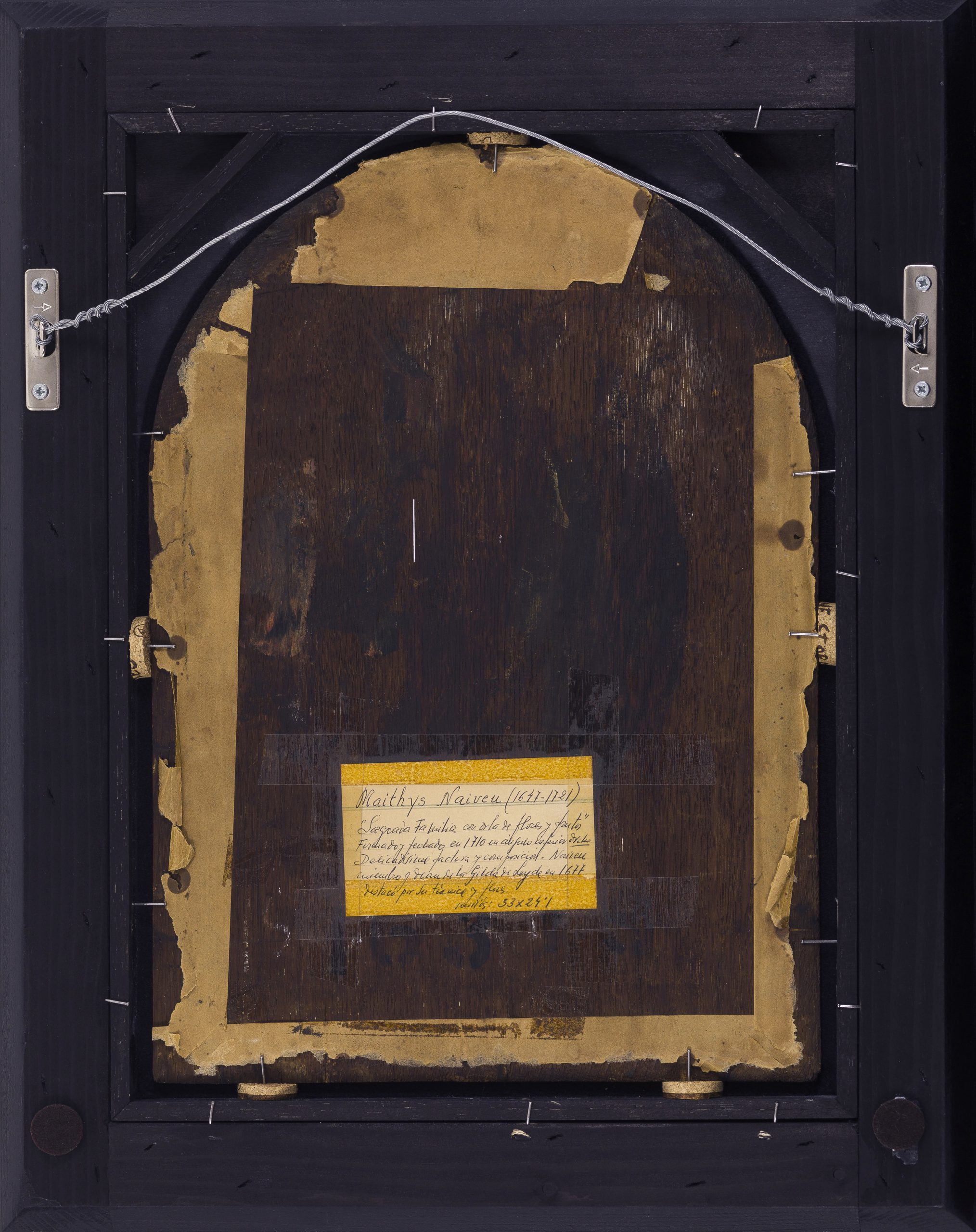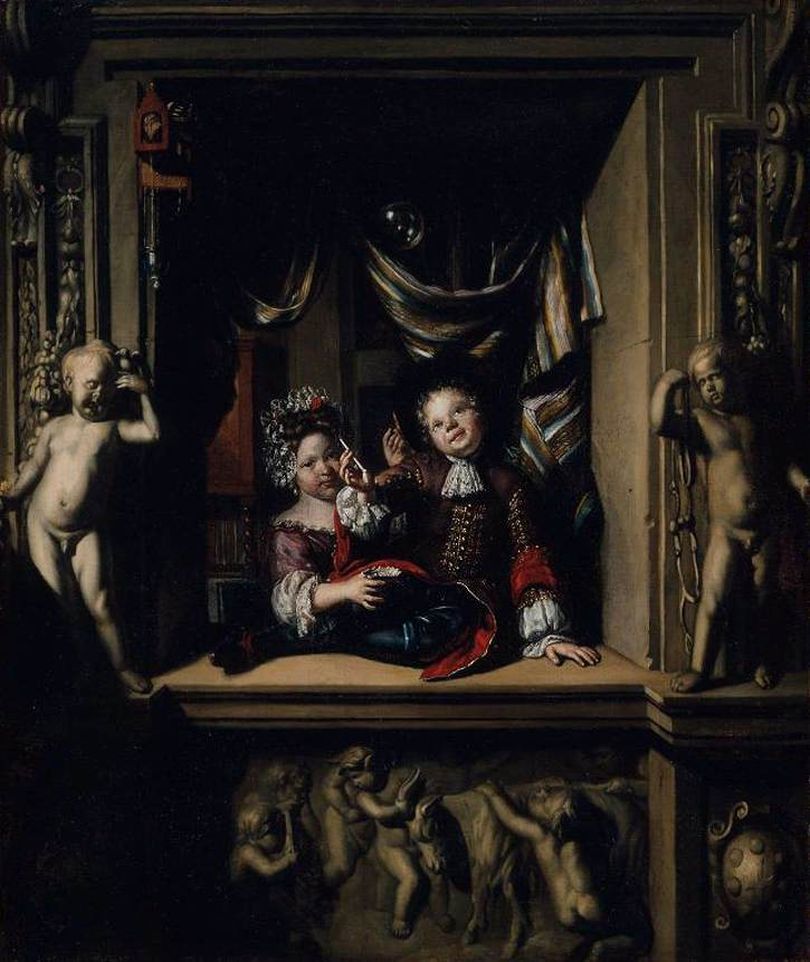MATTHIJS NAIVEU (Leiden 1647-1726 Amsterdam)
Matthijs Naiveu (Leiden 1647-1726 Amsterdam)
The Holy Family under a Garland of Fruit and Flowers
Oil on panel, 33.7 x 23.9 cm (13.3 x 9.4 inch); presented in an ebonised frame of 17th-century model
Signed ‘Naiveu’ and dated ‘1710’ (on left and right section of stone ledge)
Provenance
- Sale Countess A. Apponyi a.o. (anonymous part), Christie’s, London, 15 July 1977, lot 104, plate 38
- Private collection, Spain
Literature
Adele-Marie Dzidzaria, Entertaining genre of Matthijs Naiveu – depicting festivities and performances at the dawn of the ‘Theatre Age’, master thesis, Utrecht University, Utrecht, 2007, p. 82, cat. no. 42, repr.
***
Matthijs Naiveu was born in Leiden in April 1647 as the son of Mattheus Willems Naiveu, a wine merchant and inn-keeper from Rotterdam, and Jannetgien Melcke from Leiden.1 Naiveu was first trained in the art of painting by the glass painter and drawing master Abraham Toorenvliet (c.1620–1692), and finished his studies with the celebrated painter Gerrit Dou (1613–1675), the founder of the Leiden school of fine painters, to which Naiveu also belongs. Naiveu stayed with Dou for three years, and paid his master a very sizeable sum of a hundred guilders per year for this tutelage, for which receipts are preserved in the Leiden municipal archives.2
About a year after leaving Dou’s studio, Naiveu was accepted as a member of the Leiden guild of St Luke. He paid his contribution to the confraternity every year until 1677, when he became one of the Heads of the guild. In 1678 or 1679 he moved to Amsterdam, where he set up his studio on the Prinsengracht, near the Spiegelgracht. In Amsterdam he continued painting, but from 1696 he was also active as ‘hop inspector’ for the local brewers. Among his pupils was Focke Stapert, who entered Naiveu’s studio in 1699.
This work by Naiveu is dated 1710 and was recently cleaned of a heavily discoloured varnish, revealing a painting in very good condition. It is unusual in several respects: the arched top is unusual for Naiveu, and may indeed be the only such work in the artist’s oeuvre, although several works are known with a painted arch.3 Various paintings with arched tops are however known by Gerrit Dou, of which the most famous might be the Young Mother of 1658 in the Mauritshuis in The Hague.4
The painting is also exceptional in Naiveu’s oeuvre for depicting a religious subject, a very intimate rendering of the Holy Family, which must have been especially commissioned by a Catholic patron. Unusually, the Holy Family is depicted in contemporary clothes, an early-eighteenth-century high back chair stands in the background, and the Christ child sits on an Oriental carpet, and can only be identified by the orb. Very few works by Naiveu are religious in nature, a rare other work that can be cited is the St Jerome Kneeling of 1676 in the Rijksmuseum, Amsterdam.5 The artist is better known for his portraits and genre pieces, and was among the earliest painters to depict theatrical performances. Our work can for instance be compared to Naiveu’s Boy and Girl Blowing Soap Bubbles in the Museum of Fine Arts in Boston (fig.).6
Paintings by Naiveu are preserved in many of the world’s leading museums, including the Rijksmuseum in Amsterdam, the Museum De Lakenhal in Leiden, the Musée du Louvre in Paris and the Metropolitan Museum in New York.
SOLD
1. For Naiveu, see Adele-Marie Dzidzaria, Entertaining genre of Matthijs Naiveu – depicting festivities and performances at the dawn of the ‘Theatre Age’, master thesis, Utrecht University, Utrecht, 2007, passim and Eric Jan Sluijter a.o., Leidse fijnschilders: van Gerrit Dou tot Frans van Mieris de Jonge 1630-1760, exh. cat. Leiden (Lakenhal) 1988, p. 186.
2. Dzidzaria, op. cit., pp. 5-6.
3. Such as the Bunch of Grapes in a Niche, canvas, 57 x 46.5 cm, with Hoogsteder & Hoogsteder, The Hague, Dzidzaria, op. cit., cat. no. 106, p. 107, repr.
4. Panel, 73.5 x 55.5 cm, see Ronni Baer a.o., Gerrit Dou 1613–1675, exh. cat. The Hague (Mauritshuis) 2000-2001, cat. no. 21, pp. 106-07; for some other examples, see pp. 18-19, 37-39 and 100-05. Paintings with arched tops were also favoured by other members of the Leiden school of fine-painters.
5. Oil on panel, 37 x 29.5 cm; P.J.J. van Thiel, All the paintings of the Rijksmuseum in Amsterdam, Amsterdam 1976, p. 408, repr.
6. Oil on canvas, 49.6 x 41.6 cm, inv. no. 89.506; Dzidzaria, op. cit., cat. no. 88, p. 100, repr.
